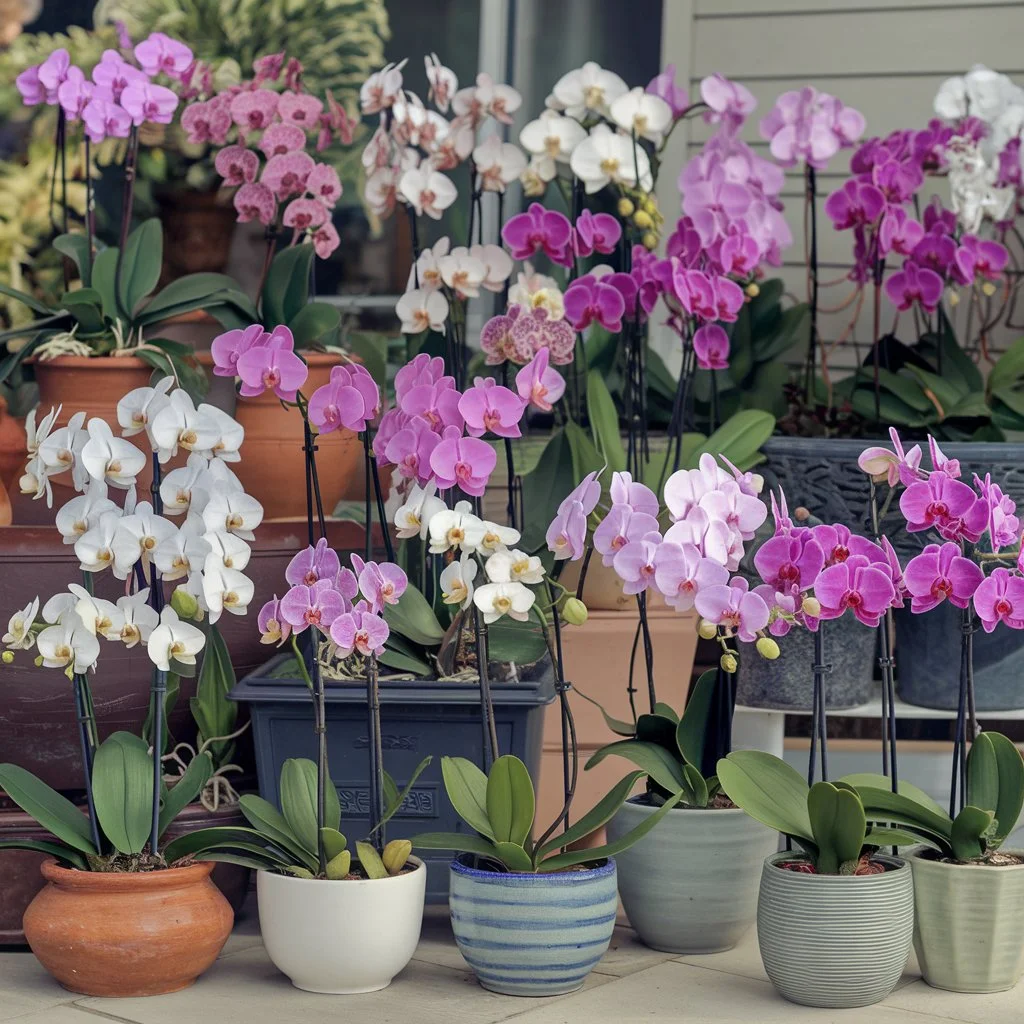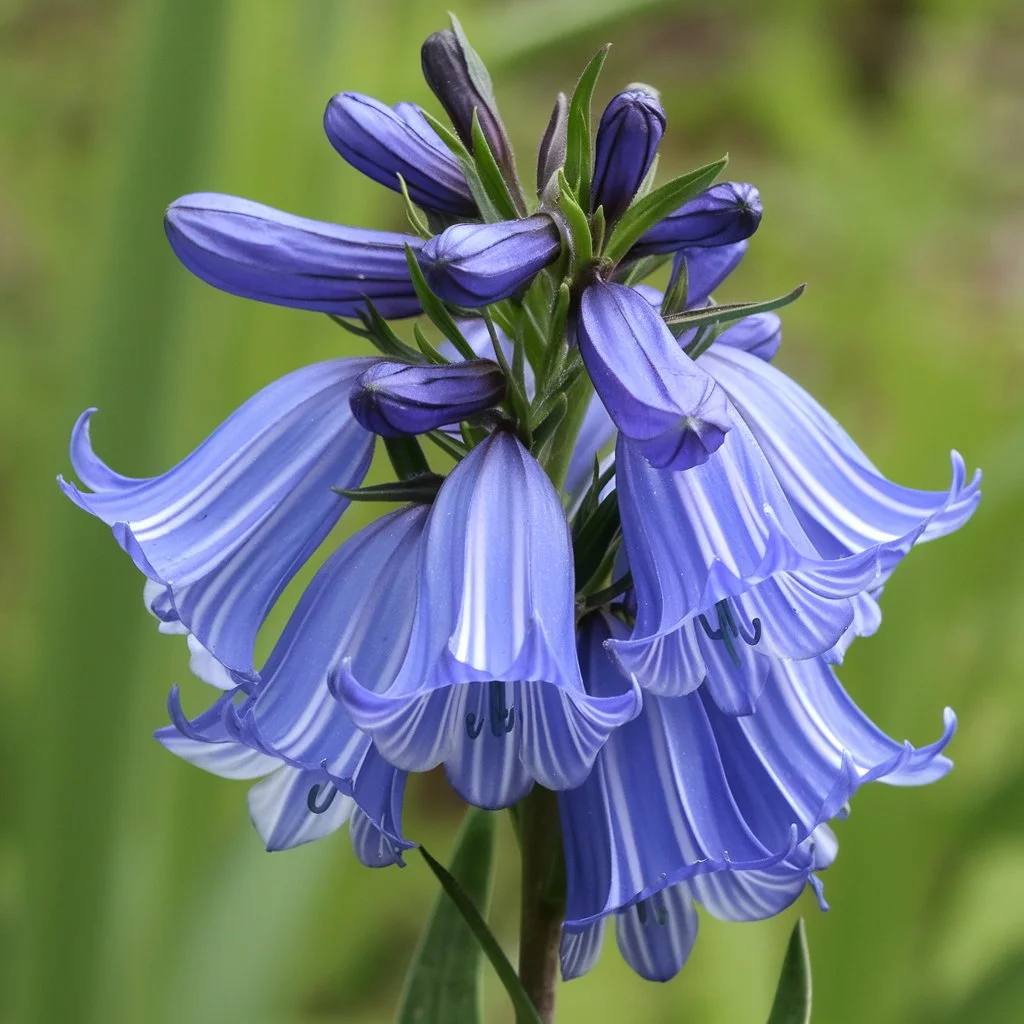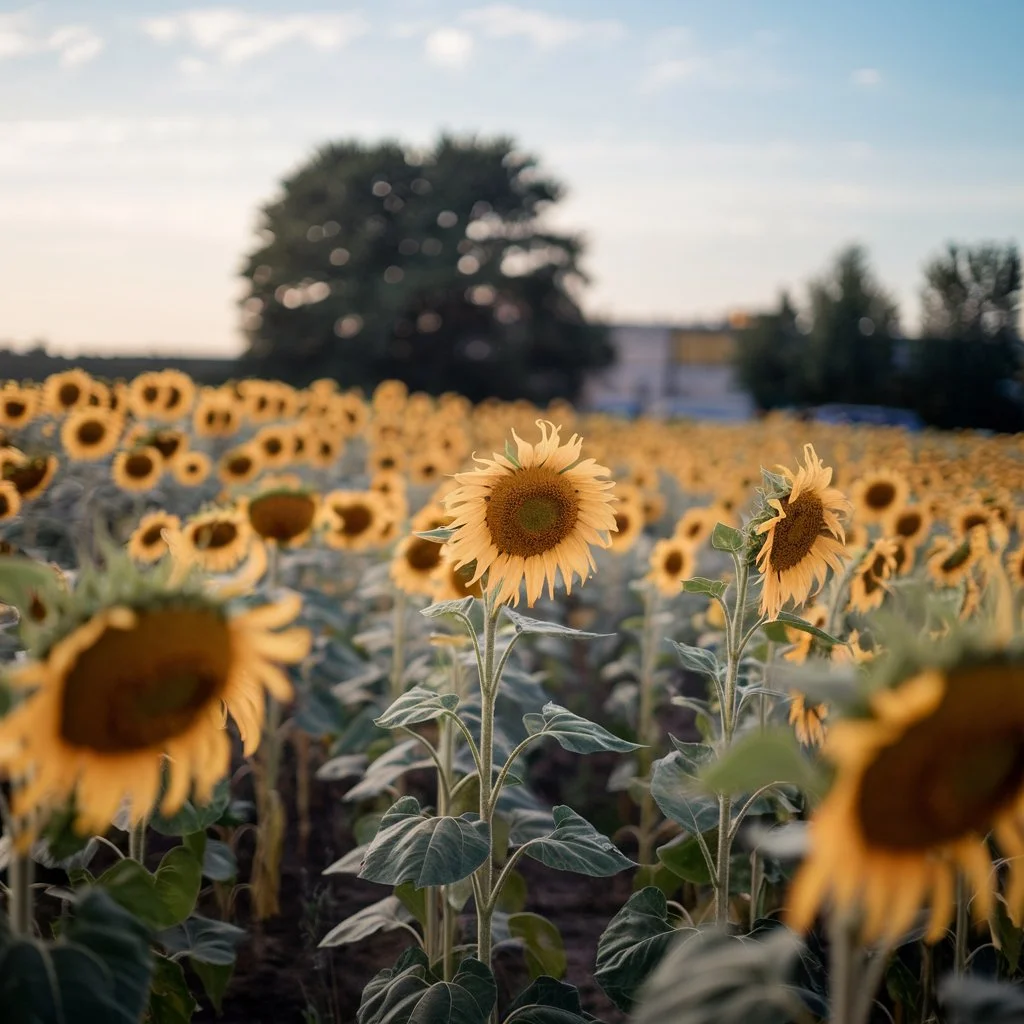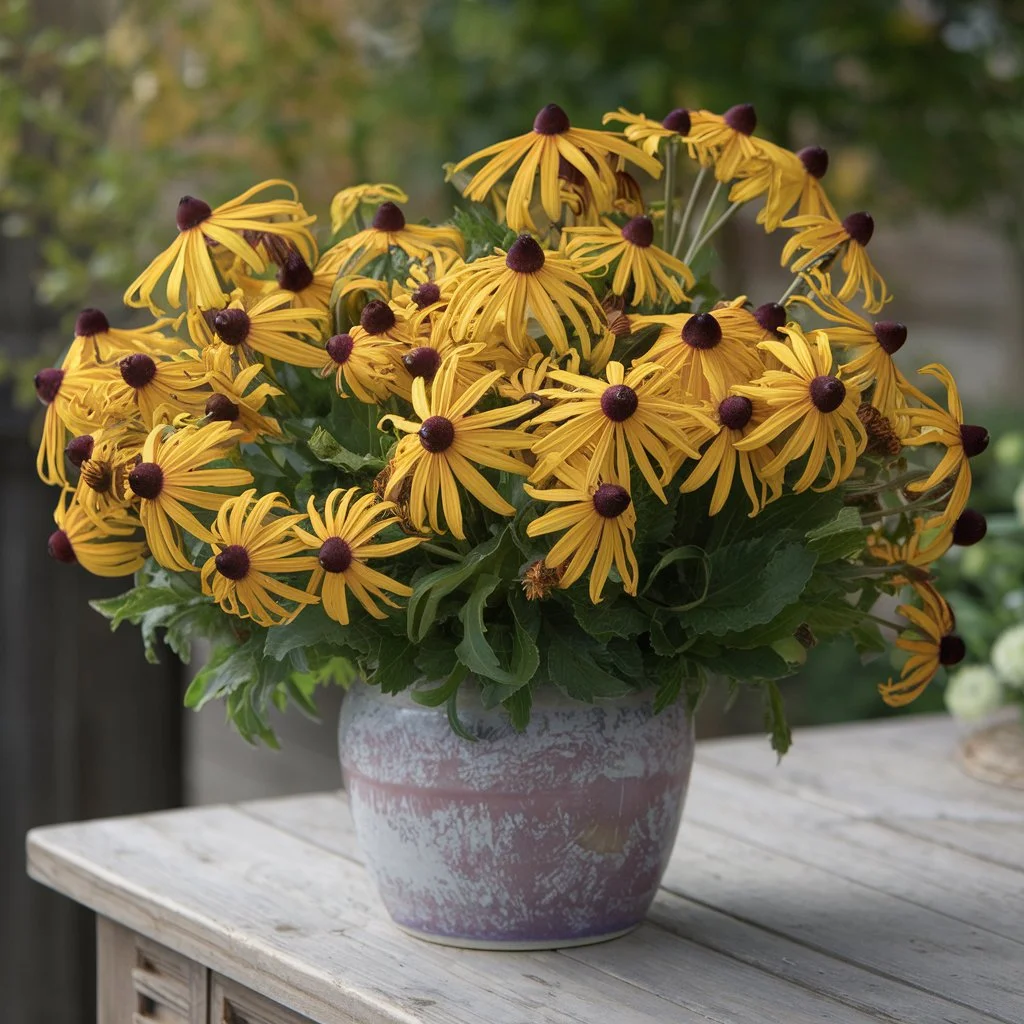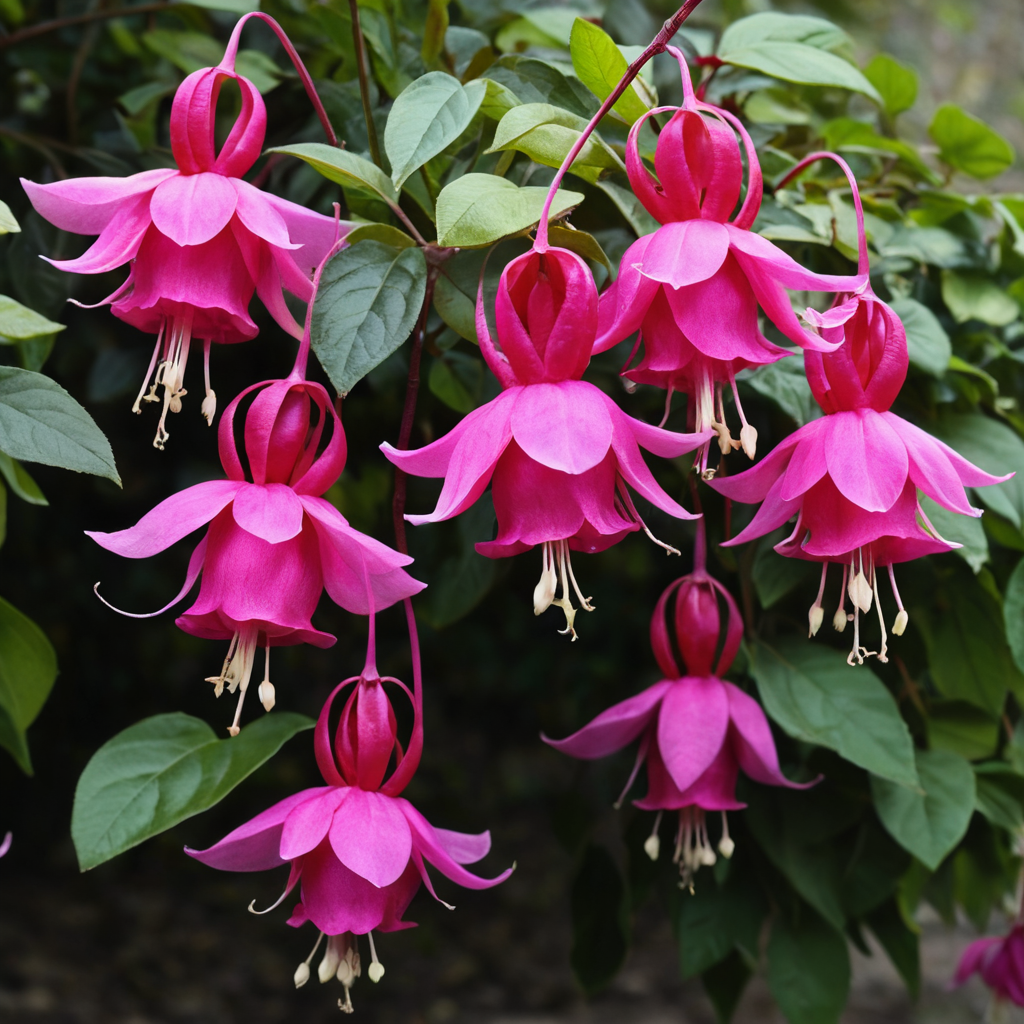Welcome to the enchanting world of orchid flower pots! If you’ve ever wondered why your orchid isn’t thriving as beautifully as it should, the answer might be hiding in plain sight—its pot. Orchids are finicky, fabulous plants that deserve a home as special as they are. Whether you’re an orchid enthusiast or a curious beginner, choosing the right pot is more than just a practical decision; it’s the secret sauce for vibrant blooms and healthy roots.
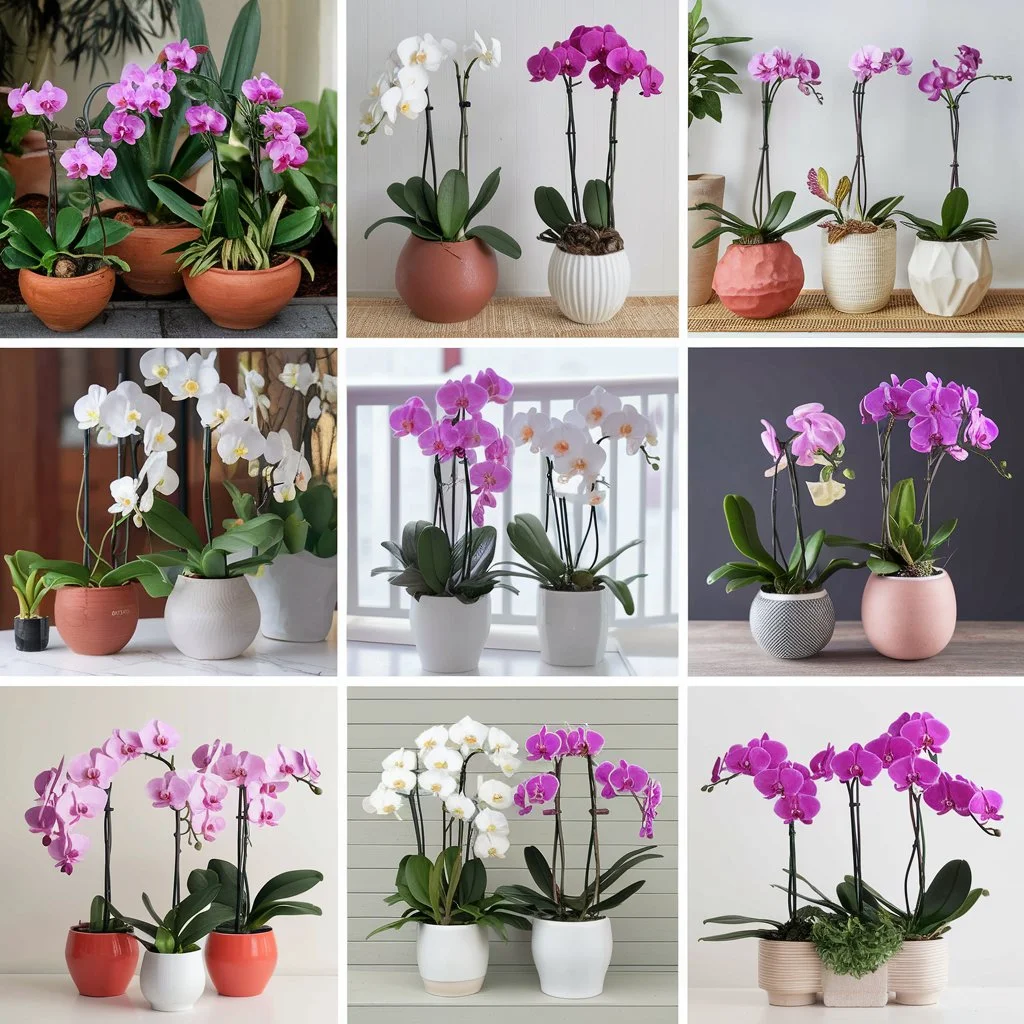
Ready to discover how the perfect pot can make your orchid the star of your indoor jungle? Stick around—we’re diving into the ultimate guide on types, tips, and insider tricks to help your orchids thrive and steal the show. Trust us, your orchids (and your Instagram feed) will thank you!
Introduction
Why Choosing the Right Pot is Crucial for Orchids
Orchids aren’t just plants—they’re an experience. These exotic beauties demand more than a random pot you picked up at the garden center. The pot you choose is their throne, their home, and the very foundation of their health and longevity. Get it right, and you’ll enjoy lush, thriving orchids. Get it wrong, and your plant could struggle to survive.
Here’s why choosing the perfect pot is so important:
- Drainage is King: Orchid roots are like Goldilocks—they don’t want to be too wet or too dry; they need it just right. A pot with excellent drainage ensures that excess water escapes quickly, keeping the roots healthy and preventing the dreaded root rot.
- Breathability for Roots: In the wild, orchids grow on trees, their roots exposed to air and light. Replicating this environment with a breathable pot is crucial. Ventilation keeps the roots oxygenated, promoting healthy growth and vibrant blooms.
- The Perfect Fit: An orchid pot isn’t just about size—it’s about the right size. Too big, and the potting medium holds onto moisture for too long, suffocating the roots. Too small, and your orchid might feel cramped and stressed. A snug yet spacious fit helps your orchid thrive.
- Support for Tall Blooms: Orchids with tall flower spikes need stability. A sturdy pot keeps them upright and prevents tipping, especially when the blooms are in full display.
The pot you choose isn’t just a practical container—it’s a cornerstone of your orchid’s care routine. Think of it as the stage where your orchid performs its dazzling act. Pick the right one, and your plant will reward you with stunning displays of color and beauty.
Overview of Orchids as Unique Plants
Orchids are unlike any other plant you’ll ever grow. They’re exotic, elegant, and carry an air of mystery that captivates both novice and experienced gardeners alike. But what makes orchids so special?
- Epiphytic Roots: Many orchids grow on tree trunks and branches in their natural habitats. Their roots are designed to cling to surfaces, absorb moisture from the air, and photosynthesize. This means traditional potting methods don’t work for them—they need a setup that mimics their natural environment.
- A Universe of Diversity: Orchids are one of the largest plant families, boasting over 25,000 species and countless hybrids. From the classic Phalaenopsis to the quirky Cattleya and the intricate Oncidium, each orchid offers a unique personality in color, shape, and fragrance.
- A Touch of Drama: Orchids are famous for their finicky reputation, but it’s part of their charm. They demand the right balance of water, light, and care—but when they bloom, it’s a spectacle like no other. Their flowers are intricate masterpieces that can last weeks or even months with proper care.
- Symbolism and Elegance: Orchids have long been symbols of love, luxury, and strength. Their elegant appearance makes them perfect for special occasions, but they’re equally stunning as everyday companions in your home.
Understanding what makes orchids unique is the first step in becoming a successful orchid grower. Their quirks may seem intimidating at first, but with the right pot, care, and a bit of patience, they’ll reward you with an unmatched display of beauty and grace. Orchids are more than plants—they’re living works of art!
Types of Orchid Flower Pots
Choosing the right type of pot for your orchid can feel like shopping for a new pair of shoes—there are so many options, and they all offer something a little different. But don’t worry, we’ve got you covered! Let’s dive into the most popular types of orchid flower pots and explore what makes each one unique.
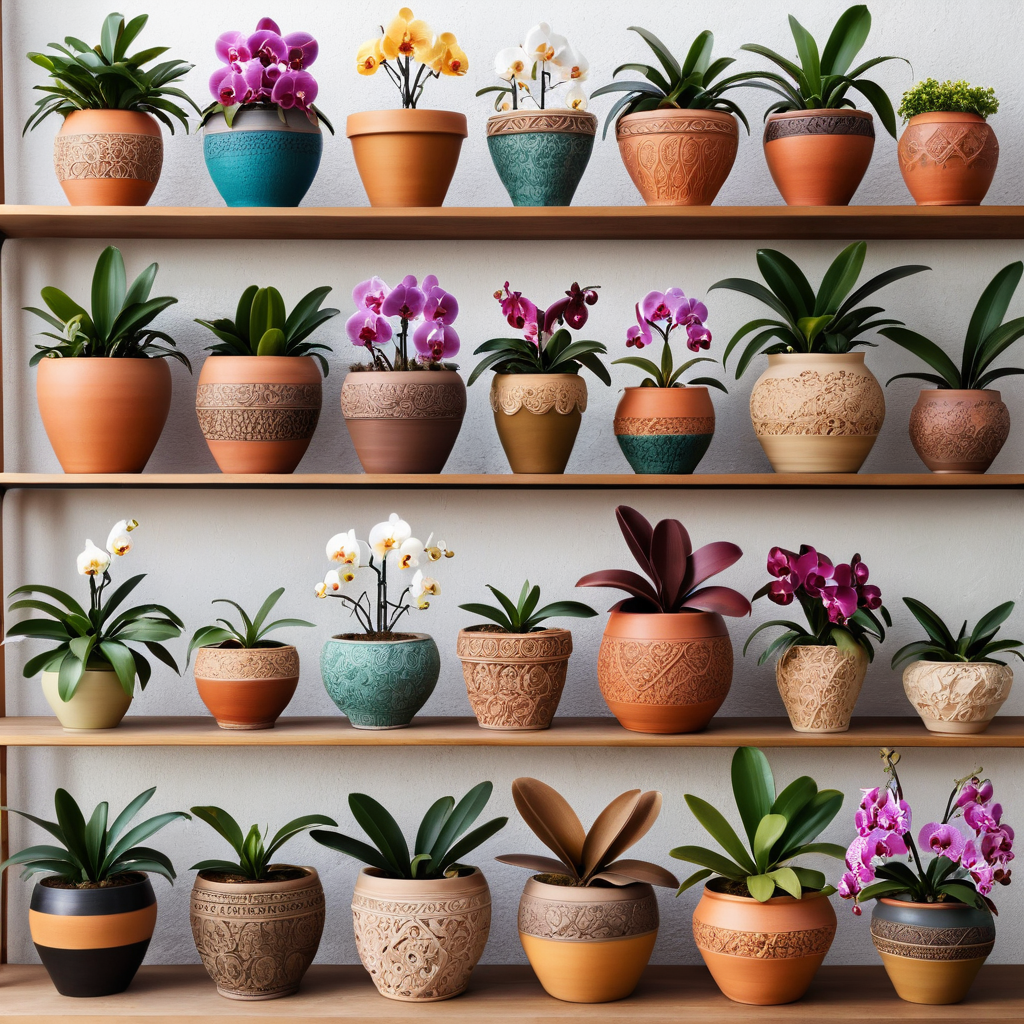
Traditional Clay Pots: Pros and Cons
Ah, the classic clay pot. It’s been around for centuries, and for good reason! These sturdy, timeless pots offer some great benefits—but they do come with their own quirks.
Pros:
- Breathability: Clay is naturally porous, meaning it allows air to circulate around the roots. Orchids love this, as it mimics their natural environment, preventing root rot and promoting healthy growth.
- Stable and Heavy: Clay pots are heavier than most, which gives them great stability. If you have tall orchids or flower spikes, this extra weight helps keep them upright and prevents tipping.
- Natural Aesthetic: There’s something rustic and charming about a clay pot. It blends well with almost any décor and adds an earthy touch to your plant collection.
Cons:
- Prone to Cracking: While they’re sturdy, clay pots can crack or chip if dropped or exposed to extreme temperature changes.
- Less Moisture Retention: While the porous nature is great for ventilation, it can also mean the pot dries out faster. You’ll need to keep a closer eye on your watering schedule to avoid dehydration.
Plastic Pots: Lightweight and Versatile Options
Plastic pots are the lightweight champions of the orchid world. If you’re looking for something easy to handle and versatile, these might be your go-to choice.
Pros:
- Super Lightweight: If you have a collection of orchids or tend to move them around often, plastic pots are your best friend. They’re easy to lift, carry, and rearrange.
- Affordable: Plastic pots are budget-friendly, making them a great option if you have a lot of orchids or if you’re just starting your orchid journey.
- Moisture Retention: Unlike clay, plastic doesn’t dry out as quickly, so your orchid roots have a little more time to absorb moisture between waterings.
Cons:
- Less Breathability: Plastic is a non-porous material, so it doesn’t offer the same airflow around the roots as clay. This can sometimes lead to waterlogging if not properly drained.
- Less Aesthetic Appeal: While functional, plastic pots can look a bit basic. They’re often more about practicality than style.
Ceramic Pots: Aesthetic Appeal and Practicality
Ceramic pots bring a touch of elegance to the orchid scene. They combine the benefits of clay with a more polished, decorative finish.
Pros:
- Elegant Design: Ceramic pots come in a variety of colors, glazes, and designs, making them perfect for showcasing your orchids in style. Whether you prefer a modern, sleek look or something more traditional, ceramic has you covered.
- Good Balance of Moisture Retention and Breathability: Ceramic pots often have a smooth, glazed exterior but still retain some breathability through small drainage holes. This makes them an excellent option for orchids that like a little moisture but also need ventilation.
- Durable: Ceramic pots are generally more durable than clay and less prone to cracking, though they can still break if dropped.
Cons:
- Heavier Than Plastic: While still fairly manageable, ceramic pots are heavier than plastic, which might be an issue if you like to move your orchids around a lot.
- Can Be Expensive: Depending on the design and craftsmanship, ceramic pots can be pricier than other options. But the aesthetic payoff is often worth it!
Mesh and Net Pots: Ideal for Ventilation
Mesh and net pots are a game-changer for orchids that need extra airflow around their roots. These pots might look a little different from traditional containers, but they’re specifically designed with orchid health in mind.
Pros:
- Exceptional Ventilation: The mesh sides of these pots allow air to flow freely around the roots, mimicking the orchid’s natural environment and promoting healthy growth.
- Prevent Overwatering: These pots are excellent for orchids that need fast drainage, as the excess water drains out quickly through the mesh. This helps prevent waterlogged roots.
- Lightweight and Practical: Mesh and net pots are often made from plastic, making them lightweight and easy to handle.
Cons:
- Not the Prettiest Option: Let’s face it—mesh and net pots aren’t the most glamorous. They’re all about function over fashion, so they may not add much visual appeal to your home décor.
- Limited Design Options: Unlike ceramic or decorative pots, mesh pots come in a more utilitarian style, which might not suit every aesthetic.
Decorative Orchid Pots: Balancing Style and Function
If you’re looking to bring a little personality and flair to your orchid display, decorative orchid pots are the way to go! These pots combine both form and function, allowing you to showcase your orchid in a stunning, unique container.
Pros:
- Endless Design Options: From sleek modern styles to colorful, ornate patterns, decorative orchid pots are available in a wide range of designs to suit your home décor.
- Functionality Meets Fashion: Many decorative pots are designed with drainage holes and proper ventilation, so they’re just as practical as they are beautiful.
- Perfect for Showcasing Orchids: These pots often feature larger or more elegant designs, allowing your orchids to truly take center stage in your living space.
Cons:
- Pricey: As you might expect, the more decorative the pot, the higher the price tag. These pots tend to be more expensive than your standard plastic or clay varieties.
- More Maintenance: Some decorative pots may require more attention in terms of drainage and moisture retention, especially if they’re more intricate or lack built-in drainage.
Choosing the right pot for your orchid is all about balancing the needs of the plant with your aesthetic preferences. Whether you’re looking for something classic, functional, or downright stylish, there’s a pot out there that will make your orchid feel right at home. So, which one will you choose? The possibilities are endless!
Choosing Pots for Other Ornamental Plants
While orchid flower pots are essential for orchid care, other ornamental plants like ginger flowers also thrive when placed in the right pots. The ginger flower, known for its striking appearance and fragrant blooms, requires warm, humid conditions to grow well. Similar to orchids, ginger flowers need pots that allow for good drainage and proper air circulation. By understanding the care needs of different plants, you can choose the perfect pot to help all your tropical plants flourish.
Features to Consider When Selecting an Orchid Pot
 Picking the perfect pot for your orchid isn’t just about choosing something pretty (though that’s definitely a plus!). There are a few important features that can make or break your orchid’s happiness. Here’s what to keep in mind when selecting the ideal home for your orchid:
Picking the perfect pot for your orchid isn’t just about choosing something pretty (though that’s definitely a plus!). There are a few important features that can make or break your orchid’s happiness. Here’s what to keep in mind when selecting the ideal home for your orchid:
Proper Drainage: Avoiding Root Rot
Let’s get one thing straight: Orchids hate soggy feet. And by feet, we mean roots! Orchids need a pot that allows excess water to drain away easily, keeping their roots from sitting in stagnant water. This is crucial because standing water encourages root rot, which is a one-way ticket to a sad, wilting orchid.
- Drainage Holes are a Must: Whether you choose a clay, plastic, or ceramic pot, always ensure it has adequate drainage holes. More holes mean better water escape, and better drainage means happier roots.
- Consider the Potting Medium: Orchids are often planted in a mix of bark, perlite, and sphagnum moss rather than traditional soil. This helps with drainage, so look for pots with wide openings that allow for proper air circulation and water flow.
Ventilation Needs for Healthy Orchid Roots
In the wild, orchids grow on trees, exposed to air and sunlight. That’s why good airflow is just as important as drainage for their roots. Without proper ventilation, your orchid’s roots could suffocate and struggle to absorb water and nutrients.
- Choose Pots with Sufficient Airflow: Mesh, net, or slotted pots are great options for allowing air to reach the roots, keeping them oxygenated and healthy.
- Look for Open-Sided Containers: Pots with sides that are either mesh or designed with slats help replicate the conditions that orchids would naturally experience, which helps prevent fungal diseases and promotes root growth.
Pot Size: Ensuring Room for Growth
Size does matter—especially when it comes to orchid pots! But bigger isn’t always better. You want a pot that’s just the right size for your orchid’s roots, allowing them room to grow without being overwhelmed by excess space.
- Don’t Go Too Big: An oversized pot can hold excess moisture around the roots, leading to root rot. Orchids generally prefer snug pots where the roots fill the space without sprawling.
- Room for Growth: If your orchid has outgrown its pot, go one size up—just a little! You don’t want to give it too much room, but enough to allow for healthy root expansion. A pot that’s about 1–2 inches larger in diameter than the current one should do the trick.
Material Considerations: What Works Best for Your Orchid
The material of the pot can affect everything from water retention to root temperature. Different materials have distinct pros and cons, so it’s important to choose one that aligns with your orchid’s needs.
- Clay Pots: These are great for orchids that need extra airflow and fast drainage, but they dry out quickly, so they’re best for orchids that don’t like to stay too wet for long.
- Plastic Pots: Lightweight and inexpensive, plastic pots retain moisture better than clay. If you tend to forget about your watering schedule, a plastic pot could help you avoid the risk of your orchid drying out too fast.
- Ceramic Pots: Ceramic pots combine aesthetics with practicality, offering a good balance of moisture retention and breathability. Just make sure they have drainage holes, as some decorative pots can be a bit shallow or lack them altogether.
Weight and Stability: Supporting Tall or Heavy Plants
Orchids come in all shapes and sizes, and some varieties can get pretty tall and top-heavy, especially when they’re in full bloom. It’s important to choose a pot that can provide the stability they need to stay upright, especially when those beautiful flower spikes start reaching toward the sky.
- Choose Heavier Pots for Taller Orchids: If you have a variety that tends to grow tall and lean, go for a heavier pot (like ceramic or clay) to prevent it from tipping over.
- Stability Matters: Make sure the pot has a solid base and isn’t too light or shallow. A sturdy, balanced pot will keep your orchid standing proud without worrying about it toppling over.
The right orchid pot isn’t just about looks—it’s about providing your plant with the ideal environment to thrive. Consider all of these features to ensure your orchid’s roots have the best possible foundation for healthy growth and stunning blooms. After all, a happy orchid means a happy gardener!
Caring for Orchids in Flower Pots
Caring for orchids in flower pots goes beyond just picking the right container—it involves understanding how to support their unique needs in a potting environment.
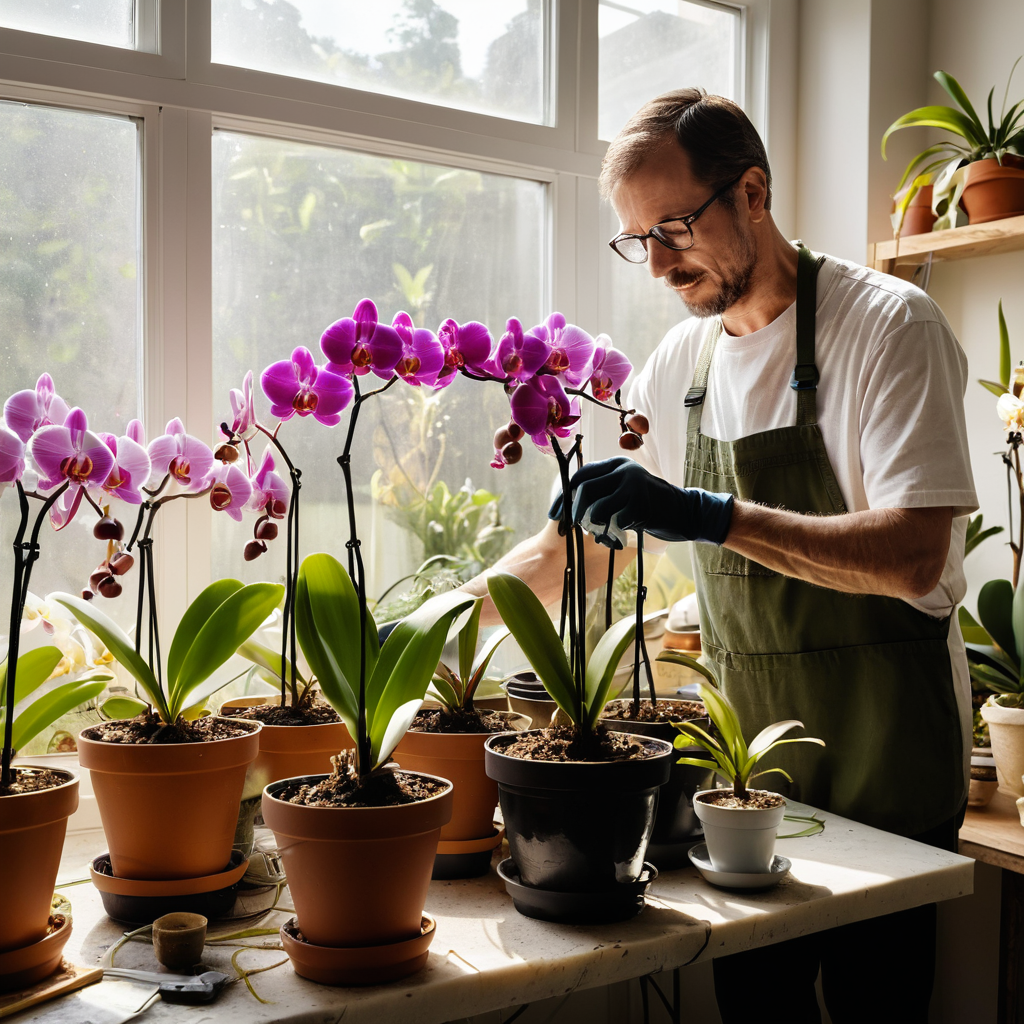
From choosing the best flower pots for orchids to perfecting your watering techniques, here’s what you need to know to ensure your orchids thrive.
Choosing the Right Potting Medium for Orchids
When it comes to potting orchids, the medium you use is just as important as the orchid flower pot itself. Orchids are picky when it comes to what they grow in—soil simply doesn’t cut it. Instead, orchids need a well-draining mix that allows their roots to breathe while holding just the right amount of moisture.
- Bark-Based Mix: One of the best flower pots for orchids will be filled with a bark-based potting mix. This ensures quick drainage and provides air pockets to keep roots oxygenated.
- Perlite or Sphagnum Moss: Some orchid flower pots may benefit from the addition of perlite or sphagnum moss in the mix. Perlite helps aerate the soil, while moss can retain moisture, making it ideal for orchids that prefer a slightly moist environment.
- Avoid Soil: Orchids are epiphytes, meaning they grow on trees in the wild, so using regular soil can trap too much moisture, leading to root rot. Stick with a potting mix designed specifically for orchids.
Re-potting Your Orchid: When and How to Do It Properly
Orchids don’t need to be re-potted frequently, but when they do, it’s important to do it at the right time and in the right way. Re-potting helps refresh the potting medium and gives your orchid more space to grow as its roots expand.
- When to Re-pot: Orchids typically need to be re-potted every 1 to 2 years, or when the roots have outgrown the orchid flower pot. You’ll know it’s time if the potting mix has broken down into a compact, soggy mass or if your orchid’s roots are crowding the pot.
- How to Re-pot: Gently remove the orchid from its current pot, trimming any dead or damaged roots. Place the orchid into the new flower pot for orchids, and add fresh potting mix around the roots, making sure it’s not too tight. Aim for a snug fit, not a cramped one. For clarity, clear flower pots for orchids are a great option when re-potting, as they allow you to see the root system and ensure everything is positioned correctly.
Watering Techniques Based on Pot Type
Watering your orchid is both an art and a science. It’s all about knowing how much moisture your orchid needs and how the type of pot affects this. Different orchid flower pots can retain or release moisture in varying ways, so let’s break it down:
- Plastic Flower Pots for Orchids: Plastic tends to retain moisture longer, so you’ll need to monitor watering more closely to avoid waterlogging. Make sure your plastic flower pot has drainage holes, and allow the top layer of the potting medium to dry out before re-watering.
- Clay and Ceramic Pots: These pots dry out more quickly due to their porous nature, so you might need to water more frequently. However, they offer excellent drainage and airflow, so be mindful not to overwater.
- Clear Flower Pots for Orchids: Clear pots allow you to monitor the moisture levels in your orchid’s roots, making it easier to avoid overwatering. You can also observe the health of the roots to ensure they’re growing well. Water when the roots appear light green or silver, indicating that they need a drink.
Managing Light Exposure with Pot Placement
Just as the type of pot affects how your orchid’s roots stay healthy, the placement of the pot can affect how much light your orchid gets. Orchids thrive on bright, indirect light, and where you place their pot can help you manage this.
- Avoid Direct Sunlight: Most orchids don’t like direct sunlight as it can scorch their leaves and cause stress. Place your orchid flower pots near a window with filtered light, like a sheer curtain or a shaded balcony.
- Rotate Your Pots: Orchids often grow toward the light, so rotating your flower pots for orchids regularly will ensure that all sides of the plant get equal exposure. This encourages balanced growth and prevents the orchid from leaning toward the light source.
- Use Clear Flower Pots for Orchids: Clear pots not only give you a view of the root system, but they also allow light to reach the roots, which can help your orchid feel more at home, as it mimics its natural environment where light filters through the canopy.
Caring for orchids in flower pots is about more than just water and sunlight—it’s about giving them the right environment to thrive. With the proper potting medium, watering techniques, and the right placement for light, your orchid will be well on its way to blooming beautifully. Remember, the best flower pots for orchids combine style with functionality, ensuring that your plant gets the best of both worlds.
Tips for Displaying Orchids in Flower Pots
Orchids are beautiful, and they deserve to be displayed in a way that showcases their elegance and charm. Whether you’re a seasoned orchid enthusiast or just starting out, these tips will help you turn your orchid flower pots into stunning displays that complement your home. Let’s dive into some creative ways to show off your orchids and find the best flower pots for orchids that also suit your space.
Creative Ideas for Indoor Orchid Arrangements
Displaying orchids in flower pots isn’t just about placing them on a windowsill and calling it a day. There are plenty of ways to get creative and elevate the look of your orchids indoors.
- Cluster Multiple Pots Together: Create a dramatic effect by clustering different orchid flower pots together. Mix various orchid types or sizes, and use matching or complementary pots for a coordinated display. This creates a lush, tropical vibe and draws attention to the beauty of the flowers.
- Accent with Colorful Pots: If you’ve got orchids with stunning, bright flowers, pair them with colorful orchid flower pots to make the blooms pop. Bright ceramic pots or bold-colored plastic pots can complement the colors of your orchid flowers.
- Use Clear Flower Pots for Orchids: Clear flower pots are a stylish way to show off the orchid’s root system while also offering a modern touch. The roots can add a layer of intrigue and beauty, while you can still observe their health and moisture levels. Clear flower pots for orchids are perfect for anyone who loves a minimalist aesthetic.
Hanging and Wall-mounted Orchid Pot Displays
For a unique and space-saving way to display your orchids, consider going vertical with hanging or wall-mounted orchid pots. This approach adds a touch of drama to your space and frees up surface area.
- Hanging Orchid Flower Pots: Consider using macramé plant hangers or decorative hanging baskets to display your orchids in flower pots. Hanging your orchids adds a whimsical, airy touch to any room and gives your plant the space it needs to thrive.
- Wall-mounted Orchid Pot Holders: If you’re short on floor space, wall-mounted holders are a great way to display your orchids. Install brackets or use specialized wall pots to hang orchids at different heights for a layered effect. These can be especially stunning if you use clear flower pots for orchids, allowing the roots and the plants themselves to take center stage.
- Vertical Gardens: Create a vertical garden using multiple hanging orchid flower pots. This option works well in a bright corner of your home or even in your kitchen, bringing a touch of nature to any space.
Blending Orchid Pots with Home Décor
Orchids are versatile plants that can complement many different interior styles, and the right orchid flower pots can enhance your home décor. Here’s how to blend your orchid pots seamlessly into your living space:
- Match Your Décor: Consider your home’s color scheme and style when choosing your orchid flower pots. If your décor is sleek and modern, go for clear flower pots for orchids or metallic finishes. For a cozy, rustic look, choose natural materials like terracotta or wood.
- Group with Other Plants: Orchids look great when grouped with other houseplants in flower pots. Try mixing orchids with leafy plants in different pot sizes and materials to create a vibrant display. Make sure to choose the best flower pots for orchids that will provide them with the right growing conditions.
- Accent Tables or Shelves: Place your orchid flower pots on decorative tables or shelves. This makes them a focal point in the room, drawing attention to their elegant flowers and bringing a touch of nature indoors. You can also pair orchids with other decorative items like candles or books to create a cohesive arrangement.
No matter how you choose to display your orchids, the key is to highlight their beauty while keeping their care needs in mind. From using clear flower pots for orchids to hanging them in creative arrangements, there are countless ways to incorporate orchids into your home décor. With the right display techniques and the best flower pots for orchids, your orchids will be the stars of any room!
Common Mistakes to Avoid
Even the most experienced orchid owners can make a few mistakes when it comes to caring for their plants. Orchids are a bit picky, and getting the right pot is just the beginning. Let’s go over some common errors to watch out for and make sure your orchid flower pots are doing their job to keep your plants happy and healthy.
Using Pots Without Adequate Drainage
One of the most common mistakes orchid lovers make is choosing orchid flower pots without proper drainage. Orchids are particularly sensitive to excess water, and without drainage holes, the roots can become waterlogged, leading to root rot and other health issues.
- Why It Matters: Orchids need to dry out between waterings, and without good drainage, moisture can accumulate around the roots, suffocating them. Make sure any flower pots for orchids you choose have sufficient drainage holes to prevent this.
- Avoid Plastic Pots Without Holes: If you choose plastic flower pots for orchids, be extra cautious—some plastic pots don’t come with drainage holes. Always check before purchasing, or be ready to drill holes yourself to ensure proper water flow.
- Look for Well-Designed Pots: The best flower pots for orchids will have multiple or large drainage holes to let excess water escape easily.
Overpotting or Choosing an Oversized Pot
It might seem tempting to place your orchid in a large, roomy pot, thinking it’ll give the roots more space to grow. But in reality, overpotting can lead to problems like excess moisture retention and weak growth. Orchids like their pots snug, not spacious!
- The Goldilocks Rule: When selecting flower pots for orchids, choose one that’s just a bit larger than the root ball. Too large, and you risk the roots sitting in stagnant water; too small, and the roots won’t have enough room to grow. The best flower pots for orchids will provide a perfect balance—just enough space for the roots to spread comfortably.
- Root Rot Risk: When there’s too much space in the pot, the moisture can linger around the roots, which can cause them to rot. Stick with a pot size that accommodates the orchid’s current root system and provides room for some future growth.
- Clear Flower Pots for Orchids: If you want to closely monitor the root growth and ensure you’re not overpotting, clear flower pots for orchids are a great choice. These pots let you see how the roots are doing and whether they’re outgrowing the container.
Neglecting to Monitor Root Health
When you’re taking care of your orchids, it’s easy to get distracted by their beautiful flowers, but don’t forget about their roots! Keeping an eye on your orchid’s root health is crucial, and the pot you choose can make that process a lot easier.
- Check for Rot and Disease: Healthy orchid roots should be firm and white or light green. If they’re brown, mushy, or have an unpleasant smell, it could be a sign of rot. Using clear flower pots for orchids makes it easier to keep tabs on the root system, so you can spot any issues early on.
- Don’t Let Roots Overcrowd the Pot: If you notice that the roots are crowding the pot and growing out of the drainage holes, it’s time to re-pot your orchid. Remember, the best flower pots for orchids allow for growth, but they shouldn’t be too small or too large.
- Airflow Matters: Poor airflow can lead to unhealthy roots. If your orchid flower pot doesn’t have enough ventilation, the roots may suffocate or become diseased. Choose pots with plenty of air circulation, like mesh or slotted varieties, to encourage healthy root development.
Avoiding these common mistakes will help ensure that your orchids thrive in their new home. Always choose flower pots for orchids with proper drainage, find the right size for your plant, and monitor root health regularly. With the right care and the best flower pots for orchids, you’ll be rewarded with vibrant, healthy blooms!
FAQ
What is the ideal container for orchids?
The ideal container for orchids is one that ensures proper drainage, such as ceramic, plastic, or clay orchid flower pots. A pot that’s just slightly larger than the orchid’s root ball prevents water retention and supports healthy growth. Clear flower pots for orchids are a good option as they allow easy monitoring of the root system.
Do orchids thrive in larger or smaller pots?
Orchids do best in pots that match the size of their root system, avoiding oversized pots which can retain excess moisture. Overpotting can cause the orchid to struggle with root rot. The best flower pots for orchids will provide enough room for the roots to expand without too much excess space.
Is it necessary for orchid pots to be transparent?
While not absolutely necessary, clear flower pots for orchids provide an excellent way to check the health of the roots and moisture levels. Transparent pots allow light to reach the roots, mimicking the orchid’s natural environment. They also make it easier to detect issues like root rot or dehydration.
Are pots with drainage holes better for orchids?
Pots with drainage holes are crucial for orchids, as they help prevent water from accumulating at the bottom of the pot, reducing the risk of root rot. Good drainage ensures the roots stay healthy and oxygenated. Always choose orchid flower pots with drainage to promote proper root development.
How frequently should orchids be watered?
Water orchids when the potting medium feels dry, which is usually once a week, depending on your orchid’s needs and the pot type. In plastic or ceramic flower pots for orchids, moisture retention varies, so ensure the roots are not waterlogged. Avoid overwatering, as orchids are prone to root rot when kept too wet.
Should the roots of orchids be visible?
Orchid roots can be visible, especially in clear flower pots for orchids, which allow you to keep track of their health. Healthy roots should be firm and light in color, not brown or mushy. Make sure the roots have proper airflow but avoid exposing them to harsh sunlight for extended periods.
Conclusion
Caring for orchids doesn’t have to be a daunting task—choosing the right orchid flower pots can make all the difference in your plant’s health and beauty. By selecting the best flower pots for orchids, whether it’s clear flower pots for orchids that let you monitor roots or pots with proper drainage to prevent water issues, you’ll set your orchids up for success. Remember to keep an eye on root health, avoid overpotting, and ensure your pots provide just the right environment for your orchids to thrive. With the right pots and a little attention, your orchids will bloom beautifully, adding vibrant touches to your home. Happy gardening!
Check out our latest article for more insights, and follow us on Facebook for updates! and connect with us on Instagram, Pinterest, and YouTube for more inspiration!

